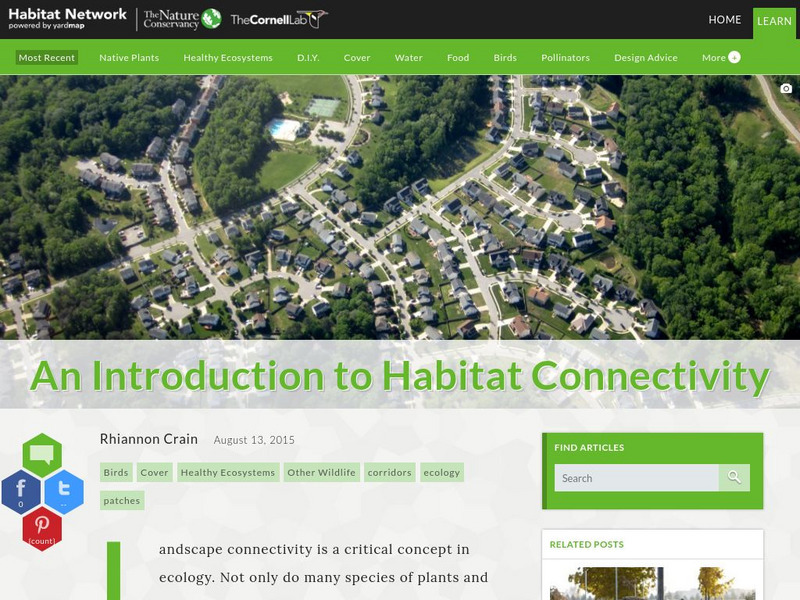PBS
Pbs Learning Media: How Disruptions Affect Animal Populations
Students explore the effects that ecosystem disruptions can have on animal populations. They learn about the disruptions that have driven three species-the Madagascar fish eagle, the Iberian lynx, and the rowi kiwi, to the brink of...
Cornell Lab of Ornithology
Habitat Network: Map Your Community
The Habitat network wants to show how mapping is a powerful way to connect you to your community.
Cornell Lab of Ornithology
Habitat Network: An Introduction to Habitat Connectivity
Find out about the idea that landscape connectivity is a critical concept in ecology.
Cornell Lab of Ornithology
Habitat Network: Get to Know Your Habitat Neighbors
Find out how connecting habitats in neighborhoods, counties, and geographic regions is essential in creating viable habitat patches and corridors for wildlife.
Read Works
Read Works: Where Will I Live?
[Free Registration/Login Required] An informational text that asks the reader to make predictions about how habitat changes affect endangered animals. A question sheet is available to help students build skills in reading comprehension.
Cornell Lab of Ornithology
Habitat Network: Pollinators at Home: Intro to Pollinator Gardening
Find out how to provide native plants that foster the activity of insects and other pollinators.
CK-12 Foundation
Ck 12: Fourth Grade Science: Life Science: Habitat Destruction
Looks at ways plants and animals, including humans, can impact the environment in this learning module.
CK-12 Foundation
Ck 12: Life Science: 12.32 Habitat Destruction
See how human activity has affected habitat loss and destruction.
Thinkport Education
Thinkport: Write Now: Where Has All the Sav Gone?
Students are presented with videos, text and data in order to write an informational piece about submerged aquatic vegetation (SAV) in the Chesapeake Bay.








